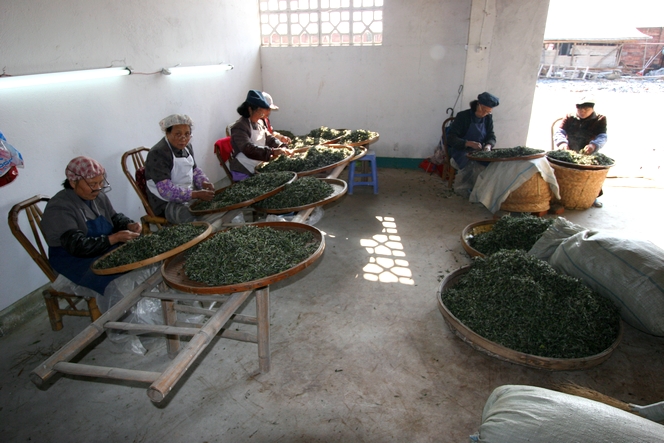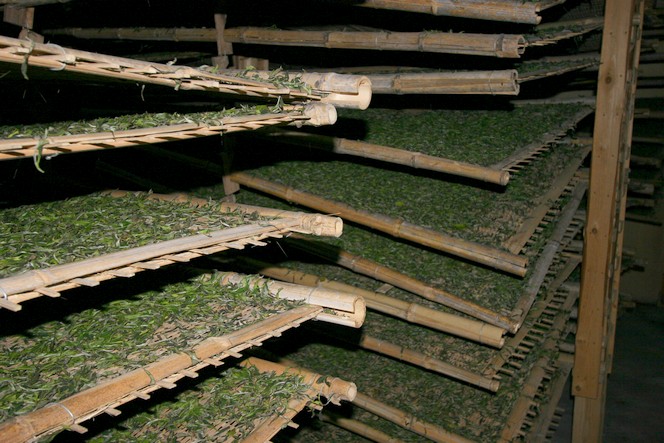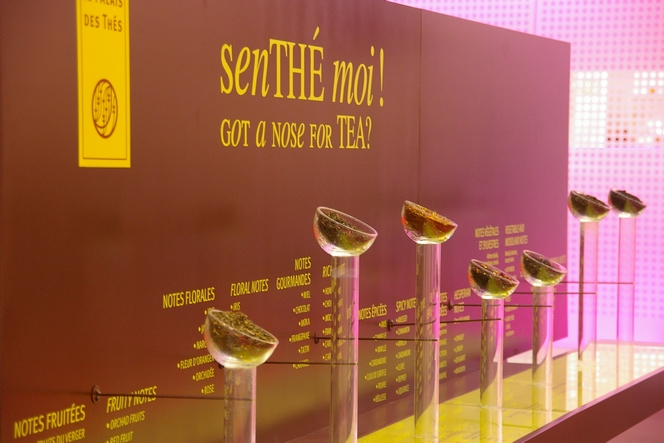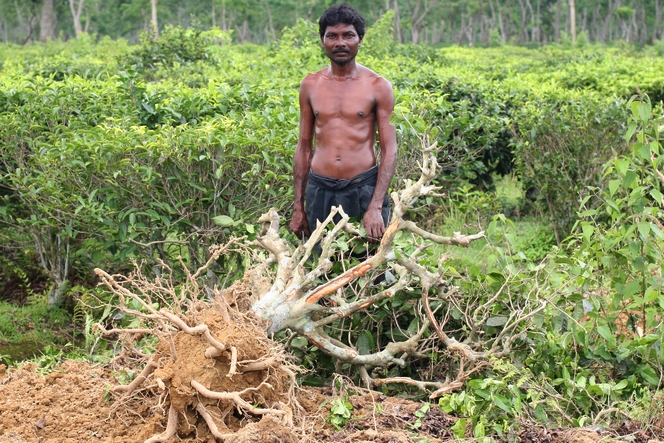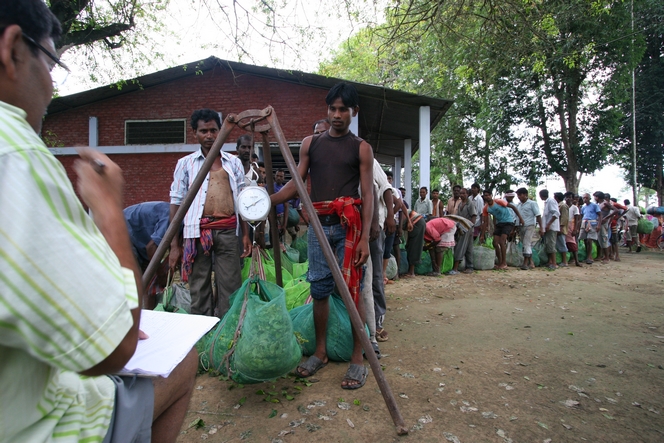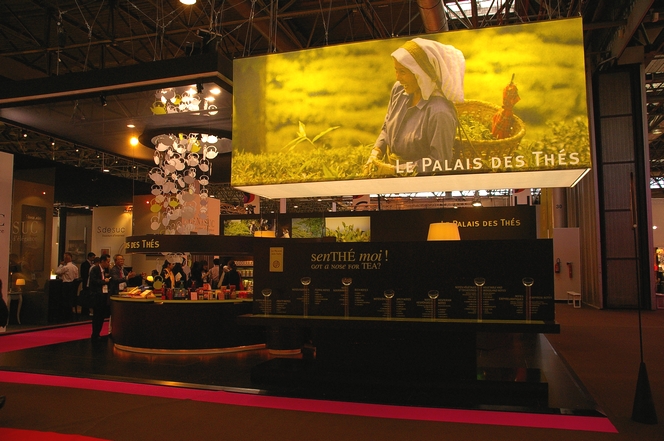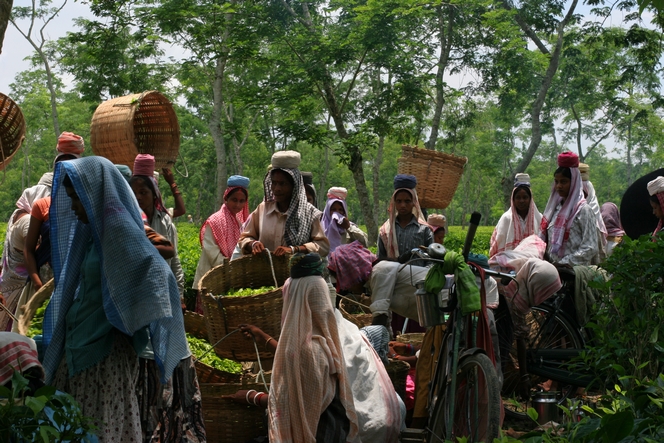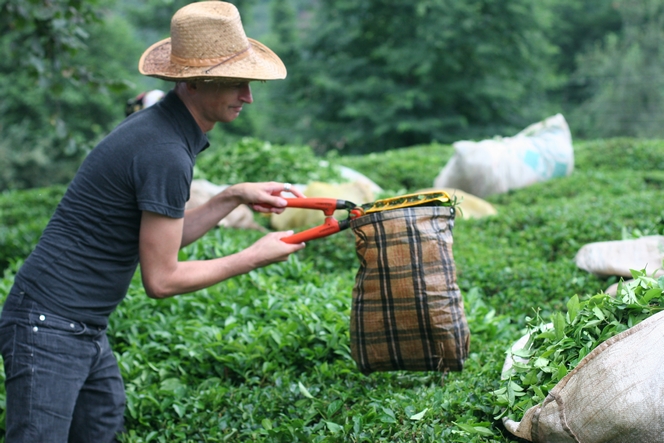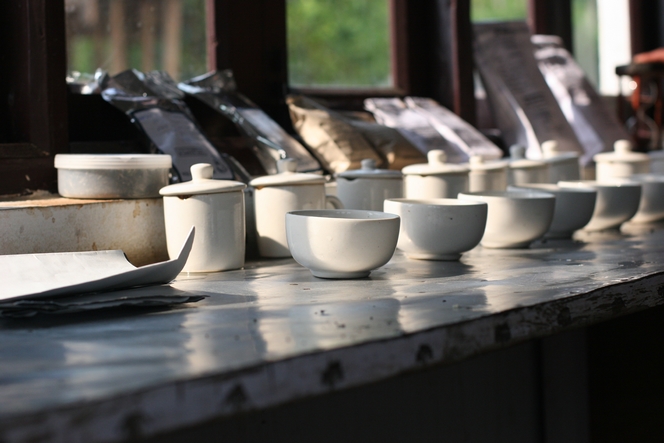In China as well as in India, when it comes to making high quality tea, no effort is spared in ensuring that only the best leaves are selected. Here, in Fuding (China), these workers are checking all the leaves of the Bai Mu Dan that has just been produced, one by one. It is a painstaking task that requires a great deal of patience. Only when this stage is finished can the leaves be packed into chests and shipped to the buyer.
The delicate art of withering white tea leaves
In the past, the withering of tea leaves took place in the open air, but nowadays it increasingly happens in a heated, well ventilated room. This system offers greater control over the ambient conditions. Here, in Fujian (China), the temperature and humidity levels are carefully regulated, and the room benefits from a sophisticated ventilation system. Which means the leaves of this Bai Mu Dan can gradually lose their water content.
A tea organ to introduce people to aromas
We don’t get many opportunities to develop our sense of smell in today’s world. This sense is rather neglected, and while children learn about colours at school, the same cannot be said about different types of aroma.
Yet we all have the ability to memorise a great number of smells. But you do need a method of remembering them, and the easiest way is to give them a name. By naming a smell, as we have done with each of the colours we are familiar with, we can remember it easily. Then you simply move on to the next one.
This “tea organ”, which featured at the recent Maison & Objet fair, is a fun way of introducing people to aromas and helping them learn to recognise some of the key fragrance groups.
Théier arraché sous une chaleur de plomb
Arracher un théier nécessite une force remarquable car ses racines plongent profondément en terre. Mais si l’homme que vous voyez ici transpire autant ce n’est pas du fait d’avoir réalisé cet exploit. Le théier vient en effet d’être déraciné par une pelleteuse et cet homme se contente de débiter la souche de l’arbuste à l’aide d’une machette. Il transpire de façon intense car la chaleur en Assam et le très fort taux d’humidité que l’on rencontre ici atteignent des sommets.
Ce qui me surprend le plus ici, du côté de Jorhat, c’est l’absence totale de vent. Durant des mois vous ne voyez pas une feuille d’arbre remuer dans cette région de l’Inde enclavée entre les hauts plateaux tibétains, au nord, et les montagnes birmanes à l’est.
Tea pluckers gathering to get their bags weighed
In the middle of the day, as soon as the plucking is finished, the workers gather to get their bags weighed.
Here, at Dufflating (Assam), everyone waits in turn and one by one hangs their bag of tea leaves on the mobile scales. The supervisor records the worker’s name and the weight of the bag, which will determine the pay for that day. You can see that the bags are made of netting, to prevent the leaves from oxidising. They must remain in perfect condition all the way to the factory, otherwise the tea will be spoiled.
Darjeeling is a hotspot in terms of seismic activity
There were many victims of Sunday’s earthquake in Sikkim, including in the city of Darjeeling, less than 100km from the epicentre. Naturally, my heart goes out to the victims of this catastrophe, and I feel very saddened for those affected. I have been in touch with our various tea producers in the region, and fortunately none came to any harm.
Although earthquakes are fairly rare in Darjeeling, the region is a hotspot in terms of seismic activity, being situated where the Indian plate meets the Asian plate. In reality though, the people of Darjeeling suffer more frequently from landslides than earthquakes. They happen every year, and there are many victims.
This photo I took in Darjeeling gives you an idea of how homes are built here, on sloping ground, and helps illustrate the population’s vulnerability to natural catastrophes.
Palais des Thés at the 2011 Maison & Objet fair
The Maison & Objet fair in Paris has just ended. Twice a year, trade visitors from all over the world come to this great event which, as its name indicates, focuses on homeware and objects. The tableware sector is an important element of this fair, which is why Palais des Thés was there with a stand, to present its latest collections. An illuminated river of teapots descending from the ceiling appears to amuse this laughing tea picker, projected and lit up on the outskirts of Paris.
Tea pluckers looking like queens
In Assam, as soon as harvesting is finished, the pluckers assemble, men on one side, women on the other, and they set off with their precious baskets to the place where they will be weighed. Some women hold their baskets under their arms, but most rest them on their heads. A rolled-up piece of cloth placed precisely on the crown of the head serves to support the basket. These splendidly colourful fabrics look like crowns, making their wearers look like queens, I think.
In Turkey, one uses clippers to pluck tea
In general, good tea should be plucked by hand. The leaf bud and the first two leaves on each stem are plucked between the thumb and index finger, with a precise, rapid movement.
It is best to avoid the use of clippers, although they are commonly used in some regions of the world where tea is produced with less emphasis on quality. Although the farmers in the Rize region of Turkey are very friendly, hospitable people, it has to be said that their harvesting methods massacre the tea.
Here, I have dared to give them a helping hand and I’m a little ashamed, I must admit, to be caught red-handed using their tool.
Tasting rooms have windows to let in the sunlight
When tasting tea, it is good to have a source of natural light in which to judge the leaves and the infusion, as well as the liquor. It means you can assess the tea not just on its taste and aroma, but also on its appearance.
This is why, on most plantations, the tasting room has windows right down one side, to let in the sunlight. The cups of tea are placed along the windows, and while the tea is infusing, I can spread the dry leaves on a card in order to get a good look at them and judge the quality of the plucking. Or, while waiting for the timer to tell me when the infusion is ready, I can take my camera, as I did here in Darjeeling, and find the best angle to immortalise this beautiful morning light.

